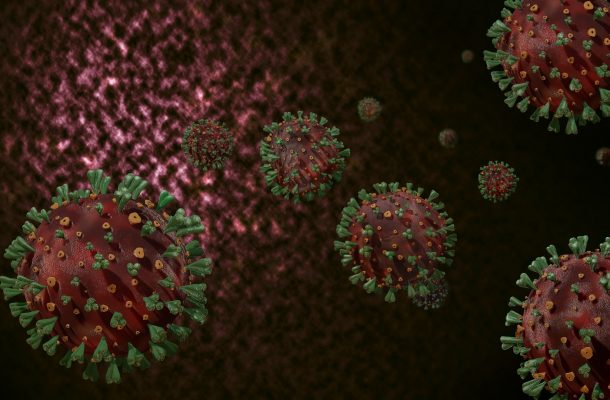Ominous Omicron

Dr Deborah Cromer is Group Leader in Infection Epidemiology and Policy Analytics, Kirby Institute, University of New South Wales
The emergence of a new variant, though unsettling, is far from unexpected. Viruses constantly mutate and take on new forms, and the level of existing immunity against a new variant is key in determining the impact an emerging strain will have.
Scientists will now need to quickly use established laboratory methods to determine how much immunity blood from vaccinated people has against Omicron and we will then be able to use the established relationship between immunity and vaccine efficacy* to predict how existing vaccines will perform against Omicron, and therefore how much impact this new variant may have on the inroads we have made in the fight against Covid-19 disease.
Closing borders may buy us some time to gather the data to answer these questions, however, as we have seen previously with both the original strain and with Delta, a virus will ultimately find its way past these barriers, and it will come down to how effective the immunity we have generated to date is against the new variant.
Not all COVID-19 variants cause trouble. For example, Lambda and Mu have not taken off globally. So it is possible that the new variant, Omicron, could hopefully fizzle out. But Omicron is troubling in terms of its mutations and the limited infections that have been seen in people.
It has a lot of mutations, more mutations than seen before with previous variants. Many of these are on the spike protein and the receptor binding domain. Some of these mutations can increase transmissibility of the variant, while others can help it evade the immune system: a worrying combination.
In terms of behaviour in people, the WHO has said that there’s an increased risk of reinfection with Omicron compared to other variants of concern. Also, the WHO suggested that it is growing at a faster rate than previous infection surges, suggesting it could be more infectious than Delta.
The limitations here are that it is still early in the discovery of the variant, so time will tell if these initial trends persist. It will also take time to determine the effectiveness of our current vaccines against Omicron, involving both observational and laboratory data.
Omicron has emerged in a country where only 25% of the population is fully vaccinated in a continent where only 10% of 1.2 billion people have only received one dose of the vaccine. This is another stark reminder to developed nations that when it comes to COVID and vaccination, we have to be selfless to be selfish and ensure that the whole world gets vaccinated in a timely manner.
Restricting travel from the African nations where Omicron has been found assumes that it is not circulating in other countries. Until other nations actively look for this strain with genomic sequencing, that is a big assumption to make. Already, two cases have been found in Hong Kong from returned travellers, apparently including one from Canada.
“Where was it discovered?
The B.1.1.529 variant was first reported to WHO from South Africa on 24 November 2021. The epidemiological situation in South Africa has been characterized by three distinct peaks in reported cases, the latest of which was predominantly the Delta variant. In recent weeks, infections have increased steeply, coinciding with the detection of B.1.1.529 variant.
The first known confirmed B.1.1.529 infection was from a specimen collected on 9 November 2021. This variant has a large number of mutations, some of which are concerning. Preliminary evidence suggests an increased risk of reinfection with this variant, as compared to other VOCs. The number of cases of this variant appears to be increasing in almost all provinces in South Africa. Current SARS-CoV-2 PCR diagnostics continue to detect this variant.
Several labs have indicated that for one widely used PCR test, one of the three target genes is not detected (called S gene dropout or S gene target failure) and this test can therefore be used as a marker for this variant, pending sequencing confirmation. Using this approach, this variant has been detected at faster rates than previous surges in infection, suggesting that this variant may have a growth advantage.
Why is it such a concern?
This new variant descends from the B.1.1 lineage, is “unprecedented” and “very unusual” in the number of its mutations. B.1.1529 has 32 mutations located in its spike protein. These include E484A, K417N and N440K, which are associated with helping the virus to escape detection from antibodies. Another mutation, N501Y, appears to increase the ability of the virus to gain entry to our cells, making it more transmissible.
Another important matter to note is that, most of the major mutations are located at the RBD of the Spike protein, the exact location where antibodies from vaccines are binding/targeted, in other words, the 32 mutations detected in the new variant’s spike protein will change the shape of this structure, making it problematic for the immune response induced by the vaccines.
These mutations can make the spike protein less recognisable to our antibodies. As a result, they won’t be as effective at neutralising the virus, which is then able to slip past immune defences and cause infection.
Should we be concerned?
While the 32 mutations in the spike proteins is a “real concern” and with it giving this variant a better way to evade antibodies from vaccines, this should not deter the current worldwide vaccination drive including booster doses together with the “weapons” that we are already have.
We should not forget that already we have the ‘weapons’ (e.g., masks, social distancing, proper hand hygiene etc.) to reduce the risk of becoming infected. It should therefore be our main goal to slow down virus spread by adhering to the existing hygiene and speeding up the vaccination including booster doses process (especially in vulnerable populations). Getting vaccinated against Covid-19 is the strongest form of protection.
Vaccine equity is a real problem and is leading to the emergence of newer and possibly more lethal strains!
Every time the virus reproduces inside someone there’s a chance of it mutating and a new variant emerging. This is a numbers game. It’s a random process, a bit like rolling dice. The more you roll, the greater the chance of new variants appearing. It’s basically a ticking timebomb. The main way to stop variants is EQUAL global vaccination. The emergence of Omicron reminds us of how important that goal remains.
We must get vaccines to these people as quickly as possible (especially in countries who are behind in vaccination rate), both to help the people there who are vulnerable but also to stop new variants from emerging. Let us not forget that in South Africa, where just 35 percent of people are fully vaccinated, the variant has begun to spread rapidly. A number of factors could be contributing to the rising caseload, including the nation’s low vaccination rate.
Vaccine equity is a global problem! If we don’t address this quickly enough, our exit from the pandemic will be set back, possibly for months/years on end. The only way is to sprint towards the finish line to have any protection against these emerging variants. In the case of the Omicron variant, as explained before, it contains the recipe for disaster as an initial look at the viral genome suggests the possibility of immune evading capabilities that are higher compared to other variants of concern.
As we are currently looking in depth at its pathogenicity, virulence and transmission, we will only get a clearer picture in the coming weeks. But countries cannot rest on their laurels and risk another variant to be wreaking havoc similar to what delta is doing currently. We must stay vigilant and tighten control, testing at our borders and monitor this development closely.
We are yet to understand if Omicron is a threat, but there are enough warning signs to warrant the precautions to limit global spread – the larger number of mutations focussed in the same area of the spike that most vaccines target, a rapid rise in cases in South Africa linked to its emergence, and reports of high rates of reinfection.
It is not yet known how effective current vaccines are against Omicron as vaccination rates are low in South Africa, with only 24% fully vaccinated. They have just come out of a large Delta wave yet are reporting worrying rates of reinfection. There are also high rates of people living with HIV and AIDS in southern Africa which makes it more complicated to interpret the effectiveness of either vaccine-induced or natural immunity against infection or serious illness.
Until we know more about the threat this variant might pose in Australia, it is wise to take precautions to prevent community transmission. We have not seen Omicron on our shores yet, and now have restrictions in place for those who have been in southern Africa to limit or monitor all arrivals, or to isolate if already in Australia.
States receiving international arrivals must have consistent and tight testing and quarantine protocols. This is exactly when we need those purpose-built facilities.
Open Forum is a policy discussion website produced by Global Access Partners – Australia’s Institute for Active Policy. We welcome contributions and invite you to submit a blog to the editor and follow us on Facebook, Linkedin and Mastadon.













